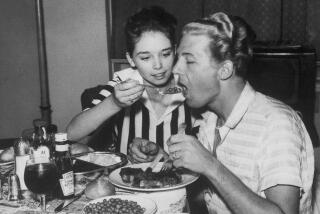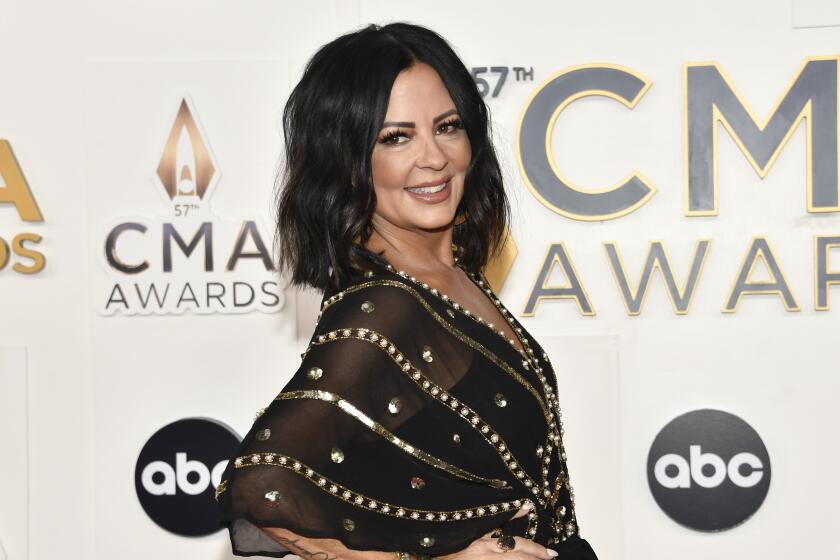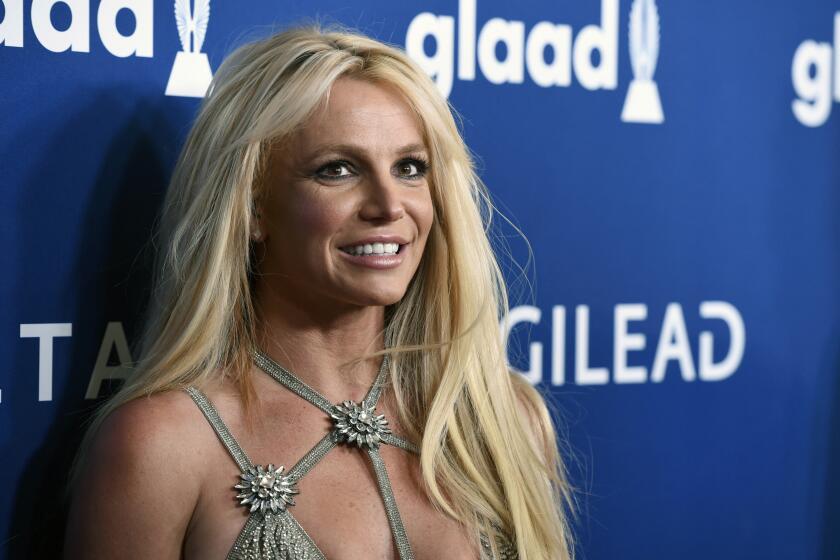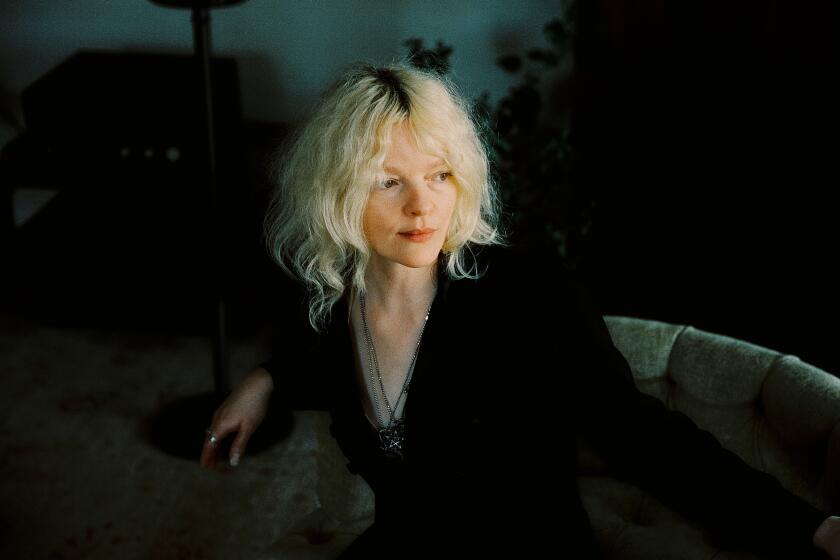ROBERT HILBURN : TAKING THE CURE AT IRVINE AMPHITHEATRE
Elvis Presley, the Rolling Stones, David Bowie and the Sex Pistols may come and go, but rebellion remains a key part of the rock ‘n’ roll experience. However, that rebellion--the outgrowth of a youthful search for independence and identity--doesn’t always take the same form.
Where junior and senior high school students find release for aggressions and frustrations in the head-banging music of heavy metal bands like AC/DC and Iron Maiden, there’s a slightly older and more sensitive audience looking for the reassurance and comfort of groups like the Cure--bands that examine questions of insecurity and alienation with commitment and purpose.
The Cure audience Thursday night at the Irvine Meadows Amphitheatre was far more sophisticated than the hard-core heavy metal crowd, but no less uniformed.
Instead of black leather jackets and motorcycle boots, many Cure fans wore the layers of black, often tattered clothing (the classic British anti-fashion statement) and the aggressively teased, bird’s-nest hair style long favored by Cure leader Robert Smith.
So, you had to feel a little empathy for them when singer-guitarist Smith showed up in a gray outfit (a color change so bold by his standards that it would be like a normal person wearing a pink Day-Glo suit) and his hair cropped summer-short.
Not that the audience hadn’t been warned about paying too much attention to items like dress and hair style. One of Smith’s earliest and best songs--1979’s “Jumping on Someone Else’s Train”--included the sarcastic line, “Everybody’s happy . . . they’re finally all the same.” Maybe some of the fans will be able to get to the barber shop before the Cure takes the stage again Sunday night at the Forum.
The change in the Cure’s music over the years has been as drastic as Smith’s switch in hair style: from such excellent high points as the arty aspirations of “Killing an Arab” (a reflection based on Camus’ “The Stranger”) and the vulnerable edges of “Boys Don’t Cry” to the dark, depressing recesses of “The Hanging Garden” and the disarming playfulness of “The Lovecats.”
Indeed, part of the Cure’s appeal rests in its changing nature--a shift of emotion and even band personnel that mirrors the emotional upheaval that is so much a part of the growing-up process. The audience senses in Smith (and the band) a force that shares its own uncertainty.
Smith is even fond of saying that the quintet enjoys the fact that it feels free to either play “absolute pap or do something really weighty” on stage.
With so much going for the Cure, it was a shame the group doesn’t present its case better live. One problem is the music itself.
Even though the Cure helped pioneer the jangly, dance-oriented guitar and keyboard style it continues to embrace, there are other bands that now employ the post-punk style with greater flair. This leaves the Cure’s live presentation seeming a bit anonymous. The songs don’t have the immediate, exhilarating musical stamp that is employed by such diverse outfits as U2, Talking Heads, R.E.M. or the Jesus and Mary Chain.
The other drawback is Smith’s manner. He doesn’t turn his back on the audience the way some of the British gloom-and-doom bunch have done, but he doesn’t reach out to the audience either. He simply stands there. To add color to the presentation, the band relied on tedious and counterproductive staging: constant gushes of steam from the stage floor and dim, flickering lighting. This may have been designed to underscore the sensitive nature of the music, but it also made everything a bit dreary and monotonous.
Smith showed more life when he returned to the stage for the encore, but the overall effect remained one of stunted growth. The Cure is clearly above average, but seemingly unable to rally itself to move to a higher plateau.
Maybe the tension in that struggle is what helps forge the strong sociological connection with the audience. These young fans understand the tension of finding their own place in the world.
CABLE MUSIC: Rock Hall of Famers Fats Domino, Ray Charles and Jerry Lee Lewis would appear to be a dream teaming, but the results are discouragingly flat on “Fats Domino & Friends,” a Cinemax cable TV special that next airs at 3 p.m. Tuesday. The artists seemed equally uninspired in separate solo appearances and in a closing jam session. There’s little of the sense of genuine celebration or spontaneity of Cinemax’s recent “A Rockabilly Session: Carl Perkins & Friends,” the obvious model for this show. Added problem: Keyboardist Paul Shaffer is a clumsy host.
LIVE ACTION: Whitney Houston will be at the Pacific Amphitheatre on Sept. 19 and at the Greek Theatre on Sept. 21-24. Tickets go on sale Monday. . . . Tickets also go on sale Monday for Genesis’ Oct. 13 and 14 dates at the Forum. . . . The Psychedelic Furs will be at Irvine Meadows Amphitheatre on Sept. 5. Tickets available Sunday. . . . The Moody Blues have added a Sept. 2 show to their coming Universal Amphitheatre engagement. . . . Also due at Universal: Jermaine Jackson, Sept. 11; Peter, Paul & Mary, Sept. 19-20, and the Oak Ridge Boys, Sept. 23-24. . . . Vanity will be at the Palace on Aug. 13.
More to Read
The biggest entertainment stories
Get our big stories about Hollywood, film, television, music, arts, culture and more right in your inbox as soon as they publish.
You may occasionally receive promotional content from the Los Angeles Times.






